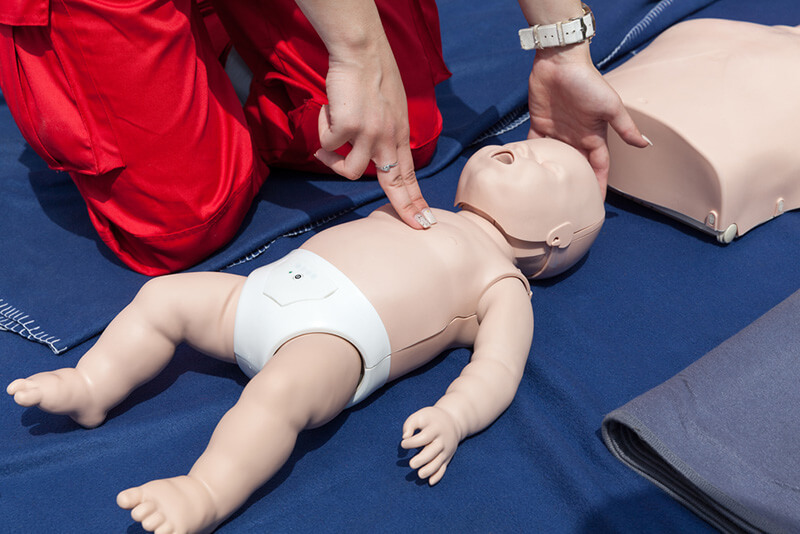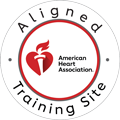In the realm of healthcare, pediatric CPR is an essential skill that every doctor must master. Children have distinct physiological characteristics that set them apart from adults, making it crucial for healthcare professionals to be well-versed in the specific techniques and considerations involved in pediatric resuscitation. The differences between adult and pediatric CPR are significant, not only in technique but also in the underlying causes of cardiac arrest. Timely intervention is vital, as the swift application of CPR can drastically improve survival rates in pediatric patients who experience cardiac arrest, underscoring the need for healthcare providers to be proficient in these life-saving techniques.
Basic Life Support (BLS) Guidelines for Pediatric Patients
Age Definitions
Basic Life Support (BLS) guidelines for pediatric patients begin with a clear understanding of age classifications. In CPR, neonates are defined as infants up to 28 days old, infants range from 1 month to 1 year, and children are defined as individuals from 1 year until puberty.
Initial Assessment and Recognition
Recognizing these distinctions is critical because the techniques used for performing CPR can vary significantly depending on the patient’s age.
Initial Assessment and Recognition
Call Us Now
Get the Best CPR Class in Kansas City Today!
Identifying the signs of cardiac arrest in children is also essential; signs may include unresponsiveness, absence of normal breathing, and lack of a palpable pulse. Common causes of pediatric cardiac arrest often differ from adults, with respiratory failure and trauma being the primary culprits. Therefore, healthcare providers must be vigilant and ready to respond to such situations with swift and effective action.
Activation of Emergency Response System
Activation of the emergency response system is a vital step in pediatric CPR. Healthcare professionals should ensure prompt activation, especially in clinical settings where immediate assistance is crucial. Early defibrillation, when indicated, can significantly enhance the chances of survival. In pediatric cases, the application of an Automated External Defibrillator (AED) should be initiated as soon as possible if a shockable rhythm is identified. The importance of timely intervention cannot be overstated, as each minute without adequate perfusion diminishes the likelihood of a positive outcome.

Performing Pediatric CPR: Key Steps and Techniques
Chest Compressions
Performing pediatric CPR involves several key steps and techniques. Chest compressions are fundamental, and correct hand positioning varies based on the age group. For infants, two fingers are used for compressions, while for children, one or two hands may be appropriate depending on the child’s size.
The depth of compressions also differs: for infants, compressions should be about 1.5 inches deep, while for children, the depth should be around 2 inches. A crucial aspect of performing effective chest compressions is ensuring full chest recoil after each compression, which allows the heart to refill with blood.
Airway Management
Airway management in pediatric resuscitation is also critical. Techniques such as the head-tilt, and chin-lift maneuver are employed to open the airway effectively. In some cases, healthcare professionals may need to utilize airway adjuncts, especially if the child has underlying conditions that compromise airway patency.
Rescue Breaths
Proper ventilation techniques are vital; for infants and children, bag-mask ventilation is often used, along with mouth-to-mouth ventilation in scenarios where a bag-mask is unavailable. The compression-to-ventilation ratio for one rescuer is 30:2, while two rescuers should use a ratio of 15:2 for pediatric patients. Care must be taken to avoid hyperventilation, which can cause complications such as decreased blood flow due to increased intrathoracic pressure.
Special Considerations in Pediatric Resuscitation
Understanding special considerations in pediatric resuscitation is imperative for healthcare providers.
Common Causes of Cardiac Arrest in Children
Common causes of cardiac arrest in children include hypoxia, shock, and respiratory failure. Tailoring resuscitation efforts to address these underlying causes is essential for effective treatment.
The Role of Defibrillation
The role of defibrillation also differs in pediatric cases; AED pads are designed specifically for children, and energy settings may be lower than those used for adults. Indications for using an AED in pediatric cardiac arrest are similar to those for adults, but the device’s settings and pad placement must align with pediatric guidelines to ensure safety and efficacy.
Post-Resuscitation Care
Immediate Post-CPR Interventions
Post-resuscitation care is an integral part of managing pediatric patients after the return of spontaneous circulation (ROSC). Immediate post-CPR interventions should focus on stabilizing and monitoring the child, assessing vital signs, and ensuring adequate oxygenation.
Preventing Secondary Complications
Preventing secondary complications, such as neurological damage, is crucial; therapeutic hypothermia and other neuroprotective measures may be implemented to minimize potential harm.
Multidisciplinary Team Involvement
Collaboration among a multidisciplinary team is essential for providing comprehensive care to pediatric patients post-resuscitation, ensuring that all aspects of their recovery are addressed.
The Importance of Regular Training and Certification
The importance of regular training and certification in pediatric CPR cannot be understated. Continuous education is vital to keep healthcare professionals current with the latest guidelines and techniques. Several organizations, including the American Heart Association and the American Red Cross, offer training programs specifically focused on pediatric resuscitation. Best practices for maintaining proficiency include simulation-based learning and participating in mock codes, allowing healthcare providers to practice and refine their skills in a controlled environment.
Conclusion
In conclusion, understanding the fundamentals of pediatric CPR is essential for every healthcare provider, especially in emergencies where quick, effective action can save a child’s life. As a doctor, staying updated on life-saving techniques such as CPR is not just a skill, but a responsibility. Whether you’re brushing up on your current knowledge or pursuing a certification for the first time, ensuring you’re prepared for the unexpected is key.
To get certified and stay confident in your skills, consider enrolling in CPR certification Kansas City. CPR Kansas City offers comprehensive training for healthcare providers, including PALS certification in Kansas City, BLS, ACLS, and CPR and First Aid courses. These hands-on, stress-free classes will equip you with the necessary skills to respond swiftly and effectively during emergencies. Don’t wait until it’s too late—get certified today with the best CPR certification in Kansas City!
Take action now and enroll in CPR Kansas City’s life-saving courses. Your knowledge and preparedness could make all the difference.


